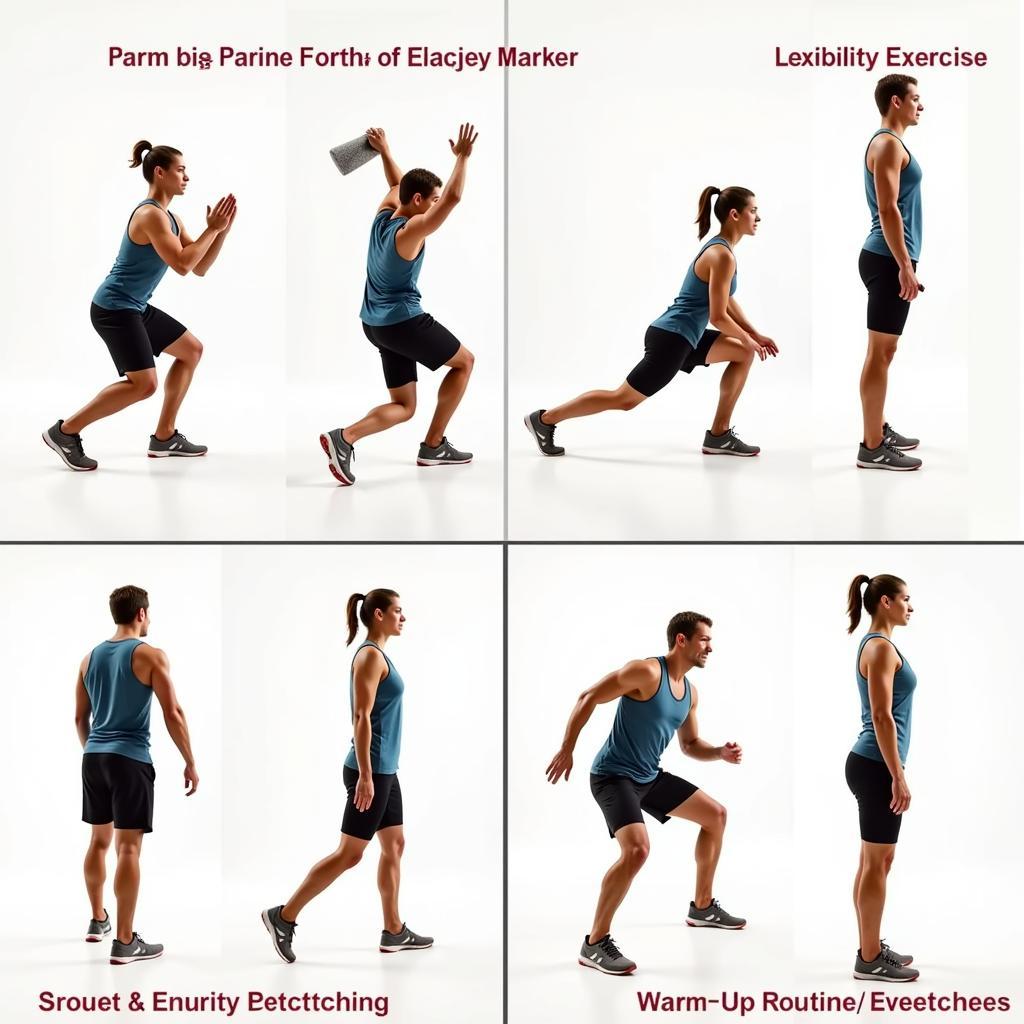How to Recover from Football Injuries Like a Pro
January 8, 2025As a professional footballer, I know firsthand the devastating impact injuries can have on a career. Recovering from an injury quickly and effectively is crucial for getting back on the pitch and performing at your best. This article will guide you through the essential steps for optimal injury recovery, helping you understand how to return stronger and more resilient.
Understanding Football Injuries and the Recovery Process
Football is a demanding sport, and injuries are an unfortunate reality. From hamstring strains to ankle sprains, understanding the nature of your injury is the first step towards a successful recovery. [keyword]: how to recover from football injuries is a common search term, reflecting the importance of this topic for players of all levels. A proper recovery plan addresses not just the physical healing, but also the mental and emotional aspects of being sidelined.
Types of Common Football Injuries
- Muscle Strains: Overstretching or tearing of muscle fibers, often occurring in the hamstrings, groin, or calf.
- Ligament Sprains: Stretching or tearing of ligaments, commonly affecting the ankles, knees, and shoulders.
- Fractures: Breaks in bones, often resulting from impacts or falls.
- Concussions: Brain injuries caused by a blow to the head.
The Importance of Early Intervention
The initial response to an injury is critical. The RICE protocol – Rest, Ice, Compression, and Elevation – is a fundamental first step. This helps to minimize swelling and pain in the immediate aftermath. Seeking professional medical advice is paramount for accurate diagnosis and a tailored recovery plan.
Key Strategies for Effective Injury Recovery
Recovering from a football injury is a multi-faceted process, requiring a holistic approach. Focusing on nutrition, physical therapy, and mental well-being is essential for a full and successful recovery.
Fueling Your Recovery with Proper Nutrition
What you eat plays a vital role in tissue repair and overall healing. A diet rich in protein, healthy fats, and antioxidants supports the body’s natural recovery mechanisms. Staying hydrated is equally important, as water is essential for transporting nutrients and flushing out toxins.
The Role of Physical Therapy
Physical therapy is a cornerstone of injury rehabilitation. A qualified physiotherapist will guide you through targeted exercises to restore strength, flexibility, and range of motion. These exercises may include stretching, strengthening, and proprioceptive training to improve balance and coordination.
The Mental Game: Staying Positive and Focused
Injury recovery can be mentally challenging. Staying positive and focused on your goals is essential for maintaining motivation and adhering to your recovery plan. Visualization techniques, mindfulness, and positive self-talk can help you navigate the emotional ups and downs of being sidelined.
Returning to the Pitch: Gradual Progression and Prevention
Returning to play too soon can increase the risk of re-injury. A gradual and progressive return to training is crucial. This involves a phased approach, starting with light activity and gradually increasing intensity and duration as tolerated.
Preventing Future Injuries: Strength and Conditioning
Preventing future injuries is a key aspect of long-term athletic success. A well-rounded strength and conditioning program focused on building strength, flexibility, and balance can significantly reduce your risk of injury. Regular warm-ups and cool-downs are also essential for preparing your body for activity and promoting recovery.
 Injury Prevention Strategies for Football Players: Strength Training, Flexibility, and Proper Warm-up
Injury Prevention Strategies for Football Players: Strength Training, Flexibility, and Proper Warm-up
Conclusion
Recovering from a football injury requires patience, dedication, and a comprehensive approach. By prioritizing proper nutrition, engaging in targeted physical therapy, and maintaining a positive mindset, you can effectively navigate the recovery process and return to the pitch stronger and more resilient. Remember, understanding how to recover from football injuries is an investment in your long-term athletic career.
FAQs
- How long does it typically take to recover from a hamstring strain?
- What are the signs of a concussion?
- When can I start running again after an ankle sprain?
- What are the best exercises for strengthening my knees?
- How can I prevent recurring injuries?
- What should I eat to promote muscle healing?
- How important is rest in the recovery process?
If you need further assistance with injury recovery or have any questions, please contact us at Phone Number: 0396443476, Email: [email protected], or visit us at 23 Tháng 3, Đắk Nia, Gia Nghĩa, Đắk Nông, Việt Nam. We have a 24/7 customer support team ready to help.